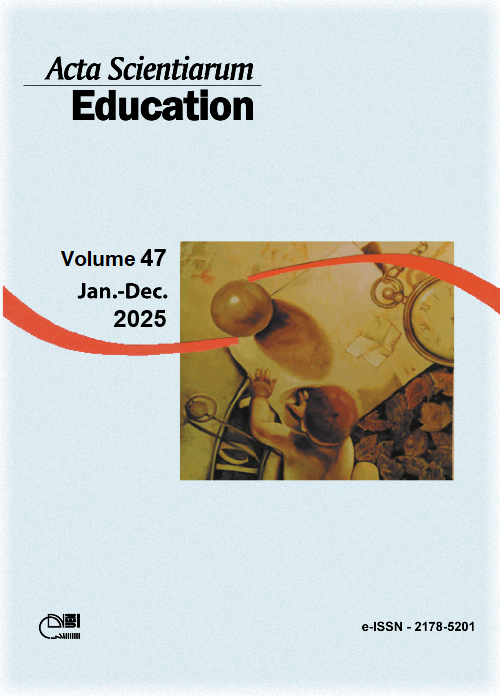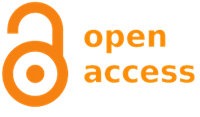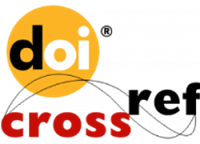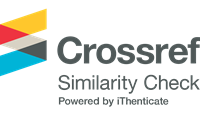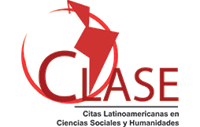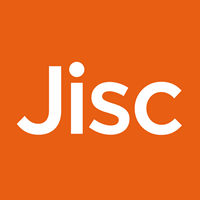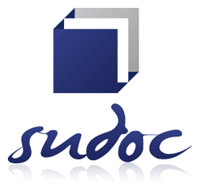Actividades didácticas en matemáticas entre estudiantes de primaria: escuelas urbanas versus escuelas rurales en Indonesia
Resumen
Esta investigación analiza las diferencias en las actividades didácticas en el aprendizaje de matemáticas en escuelas primarias entre entornos urbanos y rurales, utilizando un enfoque de métodos mixtos. Participaron docentes y estudiantes de quinto grado de 10 escuelas (5 urbanas y 5 rurales), con un total de 325 estudiantes. Los métodos de recopilación de datos incluyen observaciones en el aula, entrevistas con profesores y análisis de los resultados del aprendizaje de matemáticas. En entornos urbanos, con acceso a tecnología sofisticada, predominan las actividades que priorizan la disciplina y la resistencia de clase, aplican tareas grupales y tecnología, pero tienden a ser individualistas. Mientras, en los entornos rurales las actividades se centran más en el uso de métodos tradicionales y recursos locales, integrando las experiencias cotidianas de los estudiantes y el entorno natural, lo que fomenta el interés y la colaboración en el aula. El análisis estadístico utilizando la prueba U de Mann-Whitney reveló diferencias significativas en los resultados del aprendizaje de matemáticas, y los estudiantes urbanos tienden a obtener puntuaciones más altas que los estudiantes rurales. Estos hallazgos subrayan las disparidades en la calidad de la educación y el acceso a los recursos, enfatizando la necesidad de intervenciones políticas para reducir las disparidades educativas, incluida una asignación más equitativa de los recursos, un mayor acceso a la tecnología y el fortalecimiento de métodos de enseñanza que se adapten y respondan a las necesidades de los estudiantes.
Descargas
Citas
Ahmed, G., Nouri, J., Zhang, L., & Norén, E. (2020). Didactic methods of integrating programming in mathematics in primary school: findings from a Swedish National Project. Proceedings of the 51st ACM Technical Symposium on Computer Science Education, 261-267. https://doi.org/10.1145/3328778.3366839
Amans-Passaga, C., & Verscheure, I. (2020). Construire des pouvoirs moteurs en volley-ball en EPS: étude didactique au cycle 3 de l’école primaire. Staps, 130(4), 79-96. https://doi.org/10.3917/sta.130.0079
Bourg, A. (2021). Une situation adidactique pour les apprentissages pianistiques. Éducation et Didactique, 15(15-2), 47-70. https://doi.org/10.4000/educationdidactique.8665
Brousseau, G. (2002). Theory of didactical situations in mathematics. Kluwer Academic Publishers.
Cai, S., Liu, E., Yang, Y., & Liang, J.-C. (2019). Tablet-based AR technology: Impacts on students’ conceptions and approaches to learning mathematics according to their self-efficacy. British Journal of Educational Technology, 50(1), 248-263. https://doi.org/10.1111/bjet.12718
Canales, M. T., Tejada-Delgado, C., & Slate, J. R. (2008). Leadership behaviors of superintendent/principals in small, rural school districts in Texas. The Rural Educator, 29(3), 1-7. https://doi.org/10.35608/ruraled.v29i3.461
Cimen, O. A. (2014). Discussing ethnomathematics: is mathematics culturally dependent? Procedia - Social and Behavioral Sciences, 152, 523-528. https://doi.org/10.1016/j.sbspro.2014.09.215
Creswell, J. W. (2014). Research design: qualitative, quantitative and mixed methods approaches (4th ed.). SAGE.
Cumbreras, A. C., Sánchez, A. J. L., Sánchez, M. L. Z., & Luque, G. T. (2014). Analysis and evaluation of the fitness of Primary school students in rural and urban areas. Apunts. Educación Fisica y Deportes, 116, 44-51. https://doi.org/10.5672/apunts.2014-0983.es.(2014/2).116.04
Delacour, L. (2016). Mathematics and didactic contract in Swedish preschools. European Early Childhood Education Research Journal, 24(2), 215-228. https://doi.org/10.1080/1350293X.2016.1143257
Dikkartin Övez, F. T., & Akar, N. (2018). The investigation of process of teaching function concept in an Didactic learning environment. Pegem Eğitim ve Öğretim Dergisi, 8(3), 469502. https://doi.org/10.14527/pegegog.2018.019
Ennis, C. D., & Chen, A. (1995). Teachers’ value orientations in urban and rural school settings. Research Quarterly for Exercise and Sport, 66(1), 41-50. https://doi.org/10.1080/02701367.1995.10607654
Erdogan, A., Yazlik, D. O., & Erdik, C. (2014). Mathematics teacher candidates’ metaphors about the concept of ‘mathematics’. International Journal of Education in Mathematics, Science and Technology, 2(4), 289-299. https://doi.org/https://doi.org/10.18404/ijemst.55442
Ferretti, F., Giberti, C., & Lemmo, A. (2018). The didactic contract to interpret some statistical evidence in mathematics standardized assessment tests. EURASIA Journal of Mathematics, Science and Technology Education, 14(7), 2895-2906. https://doi.org/10.29333/ejmste/90988
Gokel, Ö, & Dagli, G. (2017). Effects of social skill training program on social skills of young people. Eurasia Journal of Mathematics, Science and Technology Education, 13(11), 7365-7373. http://dx.doi.org/10.12973/ejmste/79615
Gorgorió, N., & Planas, N. (2005). Social representations as mediators of mathematics learning in multiethnic classrooms. European Journal of Psychology of Education, 20, 91-104. https://doi.org/10.1007/BF03173213
Griffin, C. C., Gagnon, J. C., Jossi, M. H., Ulrich, T. G., & Myers, J. A. (2018). Priming mathematics word problem structures in a rural elementary classroom. Rural Special Education Quarterly, 37(3), 150-163. https://doi.org/10.1177/8756870518772164
Hair Jr., J. F., Black, W. C., Babin, B. J., & Anderson, R. E. (2019). Multivariate data analysis (8th ed.). Annabel Ainscow.
Hake, R. R. (2007). Design-based research in physics education research: a review. In A. E. Kelly, R. A. Lesh, & J. Y. Baek. Handbook of design research methods in mathematics, science, and technology education (pp. 493-508). Routledge.
Heale, R., & Twycross, A. (2015). Validity and reliability in quantitative studies. Evidence-Based Nursing, 18(3), 66-67. https://doi.org/10.1136/eb-2015-102129
Hermawan, C. M., Rosfiani, O., Yulia, & Lutfiana, V. (2020). The effectiveness of direct instruction model in mathematics subjects: a classroom action research in elementary school. International Journal of Scientific & Technology Research, 9(4), 2506-2509.
Hudson, B., & Schneuwly, B. (2007). Didactics – learning and teaching in Europe. European Educational Research Journal, 6(2), 106-108. https://doi.org/10.2304/eerj.2007.6.2.106
Isnaniah, & Imamuddin, M. (2020). Students’ understanding of mathematical concepts using manipulative learning media in elementary schools. Journal of Physics: Conference Series, 1471(1), 012050. https://doi.org/10.1088/1742-6596/1471/1/012050
Istikomah, E., & Wahyuni, A. (2018). Student’s mathematics anxiety on the use of technology in mathematics learning. Journal of Research and Advances in Mathematics Education, 3(2), 69-77. http://journals.ums.ac.id/index.php/jramathedu
Kanastren, O. R., Su’ad, Widjanarko, M., & Bintoro, H. S. (2023). Development of puzzle manipulative media based on realistic mathematics education approach in improving mathematical communication students. Proceedings of the 3rd Ahmad Dahlan International Conference on Mathematics and Mathematics Education 2021. AIP Conference Proceedings. https://doi.org/10.1063/5.0140510
Kang, S. M., & Kim, M. K. (2016). Sociomathematical norms and the teacher’s mathematical belief: a case study from a Korean in-service elementary teacher. Eurasia Journal of Mathematics, Science and Technology Education, 12(10), 2733-2751. https://doi.org/10.12973/eurasia.2016.1308a
Kjellgren, M., Lilliehorn, S., & Markström, U. (2024). The counselling practice of school social workers in Swedish elementary schools. A focus group study. Nordic Social Work Research, 14(1), 18-31. https://doi.org/10.1080/2156857X.2022.2041467
Lee, C.-Y., & Chen, M.-P. (2010). Taiwanese junior high school students’ mathematics attitudes and perceptions towards virtual manipulatives. British Journal of Educational Technology, 41(2). https://doi.org/10.1111/j.1467-8535.2008.00877.x
Li, Q., & Ma, X. (2010). A meta-analysis of the effects of computer technology on school students’ mathematics learning. Educational Psychology Review, 22, 215-243. https://doi.org/10.1007/s10648-010-9125-8
Li, Y., & Ranieri, M. (2013). Educational and social correlates of the digital divide for rural and urban children: a study on primary school students in a provincial city of China. Computers & Education, 60(1), 197-209. https://doi.org/10.1016/j.compedu.2012.08.001
Loucaides, C. A., Chedzoy, S. M., & Bennett, N. (2004). Differences in physical activity levels between urban and rural school children in Cyprus. Health Education Research, 19(2), 138-147. https://doi.org/10.1093/her/cyg014
Mainali, B. (2021). Representation in teaching and learning mathematics. International Journal of Education in Mathematics, Science and Technology, 9(1). https://doi.org/10.46328/ijemst.1111
Maulyda, M. A., Rahmatih, A. N., Gunawan, G., Hidayati, V. R., & Erfan, M. (2020). Retroactive thinking interference of grade VI students: a study on the topics of PISA literacy lessons. Journal of Physics: Conference Series, 1471(1), 1-7. https://doi.org/10.1088/1742-6596/1471/1/012037
Partanen, A. M. (2011). Challenging the school mathematics culture: ethnographic teacher research on social and sociomathematical norms. Lapland University Press.
Perbowo, K. S., Maarif, S., & Pratiwi, A. (2019). Perception of mathematics teachers in marginal regions toward the use of ICT and manipulative tools as learning media. Journal of Physics: Conference Series, 1315(1), 012042. https://doi.org/10.1088/1742-6596/1315/1/012042
Pleşan, N. C. (2021). The method of observing the student’s behavior in the educational environment. MATEC Web of Conferences, 342, 11009. https://doi.org/10.1051/matecconf/202134211009
Rasmussen, K., & Schmidt, M. C. S. (2022). Together in didactic situations – Student dialogue during reciprocal peer tutoring in mathematics. International Journal of Educational Research Open, 3, 100126. https://doi.org/10.1016/j.ijedro.2022.100126
Sadovsky, P., & Sessa, C. (2005). The adidactic interaction with the procedures of peers in the transition from arithmetic to algebra: a Milieu for the emergence of new questions. Educational Studies in Mathematics, 59, 85-112. https://doi.org/10.1007/s10649-005-5886-2
Sarama, J., & Clements, D. H. (2009). ‘Concrete’ computer manipulatives in mathematics education. Child Development Perspectives, 3(3), 145-150. https://doi.org/10.1111/j.1750-8606.2009.00095.x
Silva, L. T., Oliveira, I. S., & Silva, J. F. (2016). The impact of urban noise on primary schools. Perceptive evaluation and objective assessment. Applied Acoustics, 106, 2-9. https://doi.org/10.1016/j.apacoust.2015.12.013
Spreitzer, C., Hafner, S., Krainer, K., & Vohns, A. (2022). Effects of generic and subject-didactic teaching characteristics on student performance in mathematics in secondary school: a scoping review. European Journal of Educational Research, 11(2), 711-737. https://doi.org/10.12973/eu-jer.11.2.711
Sulisworo, D., & Permprayoon, K. (2018). What is the better social media for mathematics learning? A case study at a rural school in Yogyakarta, Indonesia. International Journal on Emerging Mathematics Education, 2(1), 39-48. https://doi.org/10.12928/ijeme.v2i1.7071
Tall, D., & Razali, M. R. (1993). Diagnosing students’ difficulties in learning mathematics. International Journal of Mathematical Education in Science and Technology, 24(2), 209-222. https://doi.org/10.1080/0020739930240206
Vásquez, C., & Alsina, Á. (2015). Conocimiento didáctico-matemático del profesorado de educación primaria sobre probabilidad: diseño, construcción y validación de un instrumento de evaluación. Bolema - Mathematics Education Bulletin, 29(52), 681-703. https://doi.org/10.1590/1980-4415v29n52a13
Derechos de autor 2025 Linda Feni Haryati, Sugiman Sugiman, Serafin Wisni Septiarti, Mohammad Archi Maulyda

Esta obra está bajo licencia internacional Creative Commons Reconocimiento 4.0.

This work is licensed under a Creative Commons Attribution 4.0 International License.
DECLARACIÓN DE ORIGINALIDAD Y DERECHOS DE AUTOR
Declaro que este artículo es original y no ha sido presentado para publicación en ninguna otra revista nacional o internacional, ni en parte ni en su totalidad.
Los derechos de autor pertenecen exclusivamente a los autores. Los derechos de licencia utilizados por el periódico son la licencia Creative Commons Attribution 4.0 (CC BY 4.0): por lo tanto, se permite compartir (copiar y distribuir el material en cualquier medio o formato) y adaptar (remezclar, transformar y crear material a partir del contenido). licencia para cualquier propósito, incluidos fines comerciales).
Se recomienda leer este enlace para obtener más información sobre el tema: proporcionar créditos y referencias correctamente, entre otros detalles cruciales para el buen uso del material licenciado.



